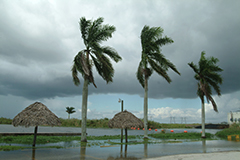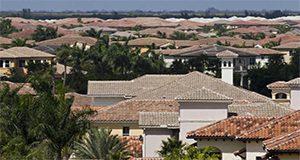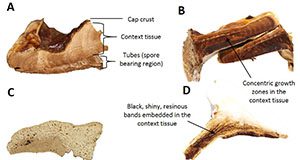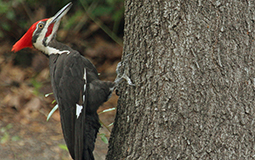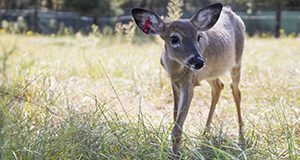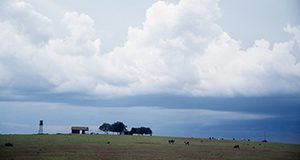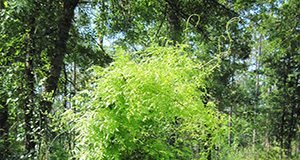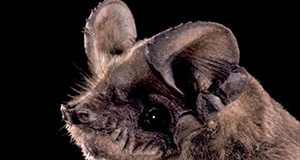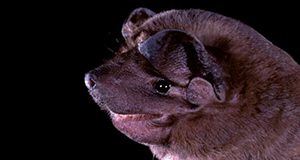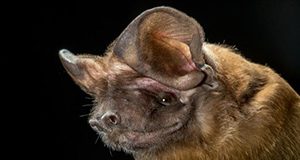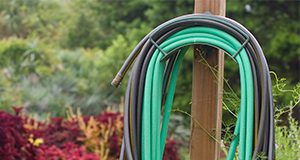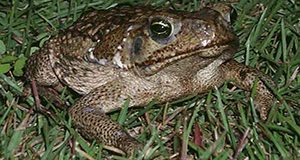Second in a series on climate change communication for Extension professionals, this 5-page fact sheet written by Claire Needham Bode, Martha C. Monroe, and Mark Megalos and published in January 2017 by the UF School of Forest Resources and Conservation provides strategies for overcoming challenges in communicating about climate change.
http://edis.ifas.ufl.edu/fr402
Category: Environment
Estimating Benefits of Residential Outdoor Water Conservation: A Step-by-Step Guide
This 9-page fact sheet written by Tatiana Borisova, Laura A. Warner, Jennison Searcy, Anil Kumar Chaudhary, and Michael Dukes and published by the UF Department of Food and Resource Economics in February 2017 was developed to help Extension agents, water-conservation managers, and homeowners estimate the economic benefits of residential outdoor water conservation. It provides guidance for reporting benefits, including lowered utility bills for homeowners, reduced water-delivery costs for utilities, and increased water supply. This publication also offers an example of an impact statement.
http://edis.ifas.ufl.edu/fe1009
New Featured Creatures: January and February 2017
- IN1154 Sirex Woodwasp Sirex noctilio Fabricius (Hymenoptera: Siricidae)
http://edis.ifas.ufl.edu/in1154 - IN1156 Samurai Wasp Trissolcus japonicus (Ashmead) (Insecta: Hymenoptera: Scelionidae: Telenominae)
http://edis.ifas.ufl.edu/in1156 - IN1158 Cucumeris Mite (Suggested Common Name) Neoseiulus cucumeris (Oudemans) (Arachnida: Mesostigmata: Phytoseiidae)
http://edis.ifas.ufl.edu/in1158 - IN1159 Solanum Whitefly, Pepper Whitefly (Suggested Common Names) Aleurotrachelus trachoides Back (Insecta: Hemiptera: Aleyrodidae: Aleyrodinae)
http://edis.ifas.ufl.edu/in1159 - IN1160 Jumping Gall Wasp, California Jumping Gall Wasp, Jumping Oak Gall, Flea Seeds Neuroterus saltatorius Edwards (Insecta: Hymenoptera: Cynipidae)
http://edis.ifas.ufl.edu/in1160 - IN1161 A Parasitoid Muscidifurax raptor Girault & Sanders (Insecta: Hymenoptera: Pteromalidae)http://edis.ifas.ufl.edu/in1161
- IN1163 A Hister Beetle Carcinops pumilio (Erichson) (Insecta: Coleoptera: Histeridae: Dendrophilinae: Paromalini)
http://edis.ifas.ufl.edu/in1163 - IN1164 Striped Mealybug Ferrisia virgata Cockerell (Insecta: Hemiptera: Pseudococcidae)
http://edis.ifas.ufl.edu/in1164
The Laccate Ganoderma of the Southeastern United States: A Cosmopolitan and Important Genus of Wood Decay Fungi
Ganoderma Karst. is a large and diverse genus of wood decay fungi that can rot the roots and/or lower trunk of many tree species. There are several laccate (varnished or polished) Ganoderma species that are found in the southeastern United States and this six-page fact sheet provides an overview of the different species. Written by Andrew L. Loyd, Jason A. Smith, Brantlee S. Richter, Robert A. Blanchette, and Matthew E. Smith and published by the Plant Pathology Department.
http://edis.ifas.ufl.edu/pp333
Building for Birds Evaluation Tool: Breeding and Wintering Habitat for Forest Birds
Several bird species use forest fragments and trees conserved in built areas as breeding, wintering, and stopover habitat. Scientists have created a Building for Birds online tool to help these birds and the people who appreciate them. This evaluation tool is most useful for small developments or developments in already fragmented landscapes.
The tool is designed for use when no opportunity is available to conserve large forest areas of 125 acres or more within a proposed development. Developers are sometimes reluctant to conserve trees and forest fragments in subdivided residential/commercial areas because it costs time and money, but there is value in this conservation effort not only for many different species of forest birds, but for future homeowners waking to birdsong in the mornings.
This 17-page fact sheet written by Mark Hostetler and Jan-Michael Archer and published by the Department of Wildlife Ecology and Conservation describes the online tool and shows how it can help preserve breeding and wintering habitat for migrating birds.
http://edis.ifas.ufl.edu/uw417
Building for Birds Evaluation Tool: Forest Fragments Used as Stopover Sites by Migrant Birds
Several bird species use forest fragments and trees conserved in built areas as breeding, wintering, and stopover habitat. Scientists have created a Building for Birds online tool to help these birds and the people who appreciate them. This evaluation tool is most useful for small developments or developments in already fragmented landscapes.
The tool is designed for use when no opportunity is available to conserve large forest areas of 125 acres or more within a proposed development. Developers are sometimes reluctant to conserve trees and forest fragments in subdivided residential/commercial areas because it costs time and money, but there is value in this conservation effort not only for many different species of forest birds, but for future homeowners waking to birdsong in the mornings.
This 18-page fact sheet written by Mark Hostetler and Jan-Michael Archer and published by the Department of Wildlife Ecology and Conservation describes the online tool and shows how it can help preserve stopover habitat for migrating birds.
http://edis.ifas.ufl.edu/uw416
Trueperella (Arcanobacterium pyogenes) in Farmed White-Tailed Deer
Trueperella is a harmless bacterium in intestinal tracts of ruminants like deer, cattle, and pigs, but if it migrates out of the intestine to other areas of an animal’s body and proliferates, it can make the animal sick. Trueperella causes many problems in deer, including lesions, abscesses, and pneumonia, and it is one of the types of bacteria that is known to contribute to the disease lumpy jaw. In young fawns, it is a common cause of death. This 3-page fact sheet written by Kathryn D. Pothier, Katherine A. Sayler, and Samantha M. Wisely and published by the Department of Wildlife Ecology and Conservation explains how to spot and treat trueperella, or, better yet, prevent it in the first place.
http://edis.ifas.ufl.edu/uw427
Improving, Restoring, and Managing Natural Resources on Rural Properties in Florida: Sources of Financial Assistance
Interested in conserving natural resources, such as wildlife habitat, or protecting the agricultural heritage of your land? Both federal and state governments have technical and financial assistance programs to help rural landowners achieve natural resource goals. These challenges are addressed through land rentals, technical assistance, cost-shares, and incentive payments and include both time-limited and permanent land-use options.
This 8-page fact sheet written by Chris Demers, Martin B. Main and Mark E. Hostetler and published by the UF School of Forest Resources and Conservation informs landowners about government programs available to help conserve natural resources.
http://edis.ifas.ufl.edu/fr156
Control y Biologia del Helecho Trepador Japones (Lygodium japonicum )
El helecho trepador japonés es una enredadera invasiva no nativa de los Estados Unidos (EEUU) que fue introducida aproximadamente en 1900. Este helecho se ha establecido a lo largo de la llanura costera del sudeste de los EEUU desde los estados de Norte y Sur Carolinas hasta Texas y Arkansas. El helecho trepador japonés es nativo de Asia, en particular Japón así como al oeste de la cordillera de los Himalayas. El área de establecimiento se ha expandido desde la región de la costa del Golfo de México incluyendo TX, AR, LA, MS, AL, FL, GA, SC, NC, y PA. En Florida, el helecho trepador japonés está ampliamente distribuido en el norte y al oeste del estado, mientras que en la parte centro-sur su abundancia es variable. Este helecho está adaptado a lugares soleados o con sombra, y por lo general se localiza en suelos húmedos como los bordes de los pantanos, lagos, arroyos y bosques de tierras altas.
This 6-page fact sheet was written by Elsa D. Chevasco, Patrick J. Minogue, Kimberly K. Bohn, and Francisco Escobedo, and published by the UF Department of School of Forest Resources and Conservation, November 2016.
http://edis.ifas.ufl.edu/fr344
Protecting Florida Panthers by Protecting Domestic Animals: Building a "Panther-Proof" Pen
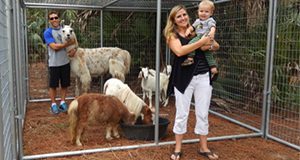
Florida panthers once ranged throughout most of the southeastern United States, but loss of habitat and efforts to eradicate panthers during the 1800s led to a large decline throughout much of their historic range. Florida panthers were listed as an endangered species in 1967 and have been federally protected by the US Endangered Species Act since 1973. For the most part, the role of panthers in the natural environment benefits people (they prey on burgeoning populations of white-tailed deer, raccoons, opossums, and feral hogs). Panthers do sometimes kill pets and livestock in rural and residential areas in southwest Florida, however, and some people believe that panther kills happen because panther populations have grown too large or are not well-managed. In fact, the panther population is dangerously small, and most of these losses can be attributed to poor management not of panthers but of pets and livestock. To maintain support for panther conservation, it is paramount that rural residents protect and secure their pets and livestock. This 3-page fact sheet written by Phillip D. Rodgers, Elizabeth F. Pienaar, Mark Lotz, and Darrell Land and published by the UF Department of Wildlife Ecology and Conservation explains how to make a locking, secure enclosure to protect livestock from panther predation–and protect the fragile panther, as well.
http://edis.ifas.ufl.edu/uw423
Florida's Bats: Brazilian Free-tailed Bat
The Brazilian free-tailed bat lives throughout Florida and is the state’s most common bat. They are important economically because they consume large quantities of insect pests. This 2-page fact sheet written by Holly K. Ober, Terry Doonan, and Emily Evans, and published by the UF Department of Wildlife Ecology and Conservation explains how to differentiate Brazilian free-tailed bats from velvety free-tailed bats and Florida bonneted bats.
http://edis.ifas.ufl.edu/uw424
Florida's Bats: Velvety Free-Tailed Bat
The velvety free-tailed bat is found nowhere in the United States but extreme south Florida. These bats emerge from their roosts earlier than most other bats, often shortly before sunset. This 2-page fact sheet written by Holly K. Ober, Terry Doonan, and Emily Evans, and published by the UF Department of Wildlife Ecology and Conservation explains how to differentiate velvety free-tailed bats from Brazilian free-tailed bats and Florida bonneted bats.
http://edis.ifas.ufl.edu/uw425
Florida's Bats: The Florida Bonneted Bat
The Florida bonneted bat is one of only two endangered species of bat in Florida and the state’s only endemic flying mammal (“endemic” means that it is found nowhere in the world but in Florida). With a 20-inch wingspan, it is Florida’s largest bat and the third largest of all 48 species of bats in the United States. The Florida bonneted bat was listed as federally endangered in 2013 because of concerns over habitat loss, degradation, and modification caused by humans. Additional concerns include the species’ small population size and restricted range, the small number of known colonies, their slow reproduction, and the relative isolation of separate populations of bonneted bats. This 2-page fact sheet written by Holly K. Ober, Terry Doonan, and Emily Evans, and published by the UF Department of Wildlife Ecology and Conservation explains how to differentiate Florida bonneted bats from velvety free-tailed bats and Brazilian free-tailed bats and explains what to do if you find one of these endangered bats.http://edis.ifas.ufl.edu/uw426
Agricultural Soils of Florida
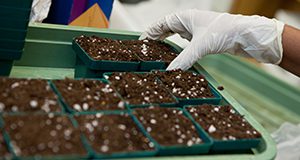
This seven-page fact sheet describes the various soil Orders in Florida, how they were developed, their characteristics, coverage in the state, and uses. This information is important for educating land owners, decision-makers, and educators about soils in Florida, leading to better soil management for agricultural and environmental sustainability. Written by Rao Mylavarapu, Willie Harris, and George Hochmuth and published by the Soil and Water Sciences Department.
http://edis.ifas.ufl.edu/ss655
November 2016 Featured Creatures
- Halloween Pennant Dragonfly Celithemis eponina Drury (Odonata: Libellulidae)
http://edis.ifas.ufl.edu/in1153
Household Water Usage and Irrigation Practices
Water pollution and drought in the United States have made water scarcity a widespread concern. Currently, residential consumers account for most urban water use, and meaningful programs that lead to water conservation rely on a comprehensive understanding of how consumers use water inside and outside their homes. This 5-page fact sheet written by Hayk Khachatryan, Alicia Rihn, and Michael Dukes and published by the Department of Food and Resource Economics outlines University of Florida researchers’ assessments of current US household indoor and outdoor water use to assist policy makers and researchers with creating incentives for homeowners to conserve water.
http://edis.ifas.ufl.edu/fe996
New Featured Creatures for October 2016
- A Bark Beetle Hypothenemus eruditus Westwood, 1836
http://edis.ifas.ufl.edu/in1147 - Fourlined Plant Bug Poecilocapsus lineatus (Fabricius)
http://edis.ifas.ufl.edu/in1151 - Insidious Flower Bug, Minute Pirate Bug Orius insidiosus Say
http://edis.ifas.ufl.edu/in1148 - Longtailed Mealybug Pseudococcus longispinus (Targioni Tozzetti)
http://edis.ifas.ufl.edu/in1149 - Tuliptree Scale Toumeyella liriodendra (Gmelin)
http://edis.ifas.ufl.edu/in1150
Ecological Risk Assessment for Invasive Wildlife in Florida
Global trade and travel transport plants and animals from native ranges to new ecosystems. About 10 to 20% of nonnative (exotic, alien) species that arrive in new locales become invasive, meaning they are likely to harm the environment, economy, or public health. Preventing the introduction of invasive species is the most effective way to protect native biodiversity and ecosystem integrity. Once an invader begins to establish and spread, its control costs increase rapidly. Florida ports are the entry points for about half of the reptiles, arachnids, insects, and crustaceans imported into the United States. These arrivals, coupled with hospitable climate and habitats, have made Florida home to more invasive species than any other state but Hawaii. While it is too late to prevent the invasion of Burmese pythons and Argentine black and white tegus, we can act to prevent other potentially destructive species from establishing. This 6-page fact sheet written by Venetia Briggs-Gonzalez, Kyle Allen, Rebecca G. Harvey, and Frank J. Mazzotti and published by the Department of Wildlife Ecology and Conservation explains how to assess the risk that a given invasive species presents to the environment and how to develop and use risk-screening tools to reduce the harmful effects of invasions or, better yet, prevent them entirely.
http://edis.ifas.ufl.edu/uw419
The American Crocodile: An Indicator Species for Everglades Restoration
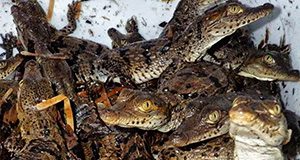
The American crocodile (Crocodylus acutus) is a top predator that lives along the southern tip of peninsular Florida, inhabiting saltwater, brackish water, or freshwater near coastal areas in mangrove-lined ponds, creeks, coves, man-made ponds, and canals. This 3-page fact sheet written by Rebecca G. Harvey, Michiko Squires, Jeff Beauchamp, Frank J. Mazzotti, and Laura A. Brandt and published by the Department of Wildlife Ecology and Conservation explains how monitoring populations of threatened crocodiles can help scientists chart the success of projects to restore the Everglades.
edis.ifas.ufl.edu/UW422
Coral Reef Conservation Strategies for Everyone
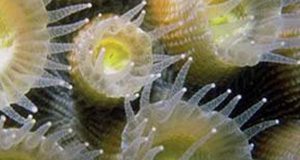
Corals are small animals related to jellyfish. Large groups of these animals live together and form huge interconnected colonies called reefs. Coral reefs are some of the most diverse ecosystems on the planet; an essential habitat for a wide variety of animal and plant species. About 400 million people rely on coral reef fish as a source of protein; about 6 million people make a living by catching and selling coral reef fish and invertebrates; tourism activities like SCUBA diving and snorkeling provide revenue of US$9.6 billion per year; and reefs reduce wave energy by 97%, helping to protect 197 million people in coastal areas from beach erosion, wave energy, and flooding. Learn how you can help protect these fragile, essential ecosystems from threats in this 7-page fact sheet written by Kathryn E. Lohr and Joshua T. Patterson and published by the Program in Fisheries and Aquatic Sciences, School of Forest Resources and Conservation.
edis.ifas.ufl.edu/FA199
